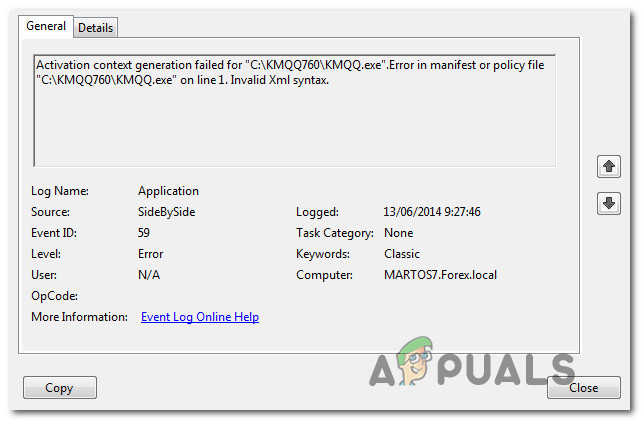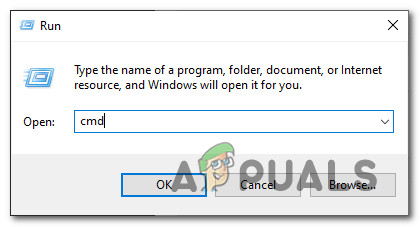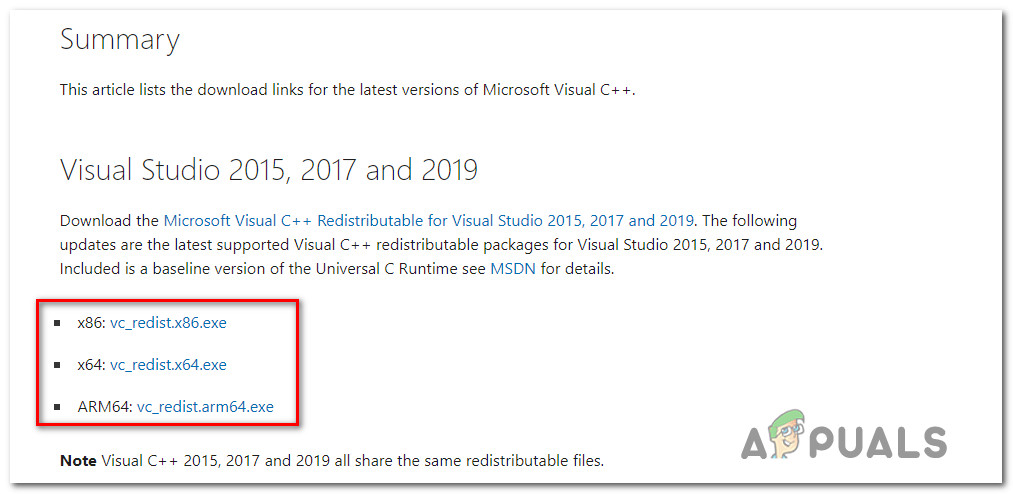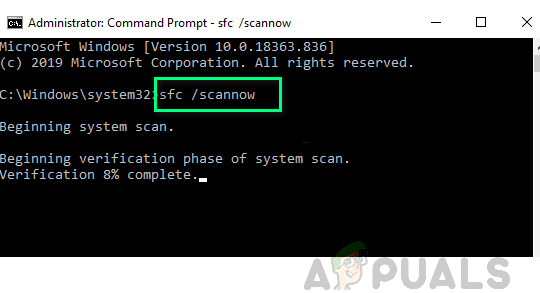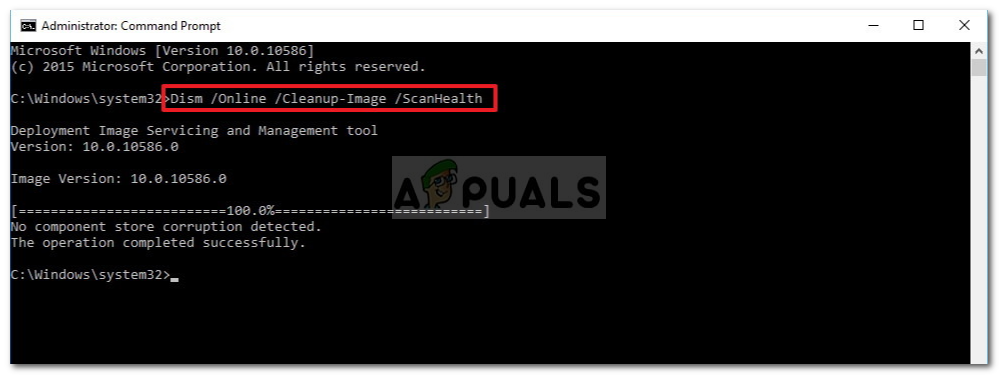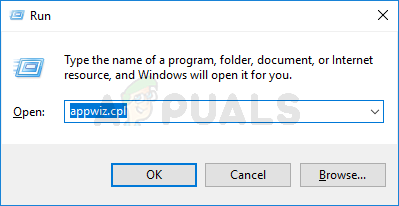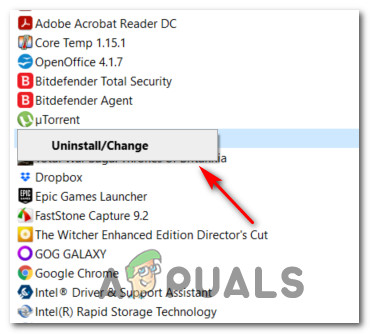After investigating this particular issue, it turns out that there are several fairly common scenarios that might trigger this error code. Here’s a list of potential culprits that might be responsible for triggering these SideBySide Error 59 events: Now that you are familiar with every potential scenario that might lead to this error, here’s a list of methods that some users have successfully used to resolve the issue on their computer:
Method 1: Install missing Microsoft Visual C++ Redist. Packages
The most common cause for this particular error code is a missing Visual C++ dependency that the application you are trying to launch expects to use. If you notice new instances of the SideBySide Error 59 when you’re not actively trying to open a program, chances are there’s a startup service unable to start due to missing Visual C++ Redist. package. If this scenario is applicable, you should be able to fix the issue by installing the missing Visual C++ Redist. Package and restarting your computer. But keep in mind that different programs will require different Redis. Packages, so you need a way to figure out which VC++ runtime is expected first. For step by step instructions on how to do this, follow the instructions below: Note: If you already know which dependency is missing, skip the first 3 steps altogether. In case this method was not applicable or you are still encountering the same SideBySide Error 59 issue, move down to the next potential fix below.
Method 2: Running SFC and DISM scans
If the first potential fix was not effective in your case, you should turn your attention towards a potential corrupted system file that is affecting the usage of the required VC++ dependencies. This is way more likely if you’re experiencing other similar runtime errors with multiple installed programs. If this is the reason why you are seeing the SideBySide Error 59, you should start by running scans with two built-in utilities – System File Checker (SFC) and Deployment Image Servicing and Management(DISM). Note: While these two tools share some similarities, we recommend running both scans in quick succession in order to improve your chance of fixing the corrupted system files. The ideal way to start is with a simple SFC scan. Note: This is an entirely local tool that will not require you to have a reliable internet connection. After you initiate this procedure, it’s very important to not close the CMD window even if the utility looks like is stuck. Wait until the process is complete, as interrupting the operation might cause logical errors on your HDD or SSD. After the SFC scan is finally complete, restart your computer and see if the issue is fixed once the next computer startup is complete. If the same SideBySide Error 59 problem is still occurring, initiate a DISM scan and follow the on-screen prompts to complete the operation. Note: As opposed to SFC, DISM uses a sub-component of Windows Update to download healthy equivalents to replace corrupted system files. Due to this, you need to make sure that you have reliable Internet before initiating this operation. Once the DISM scan has been completed successfully, restart your computer and check if new instances of the same error have stopped occurring. In case the same issue is still occurring, move down to the next potential fix below.
Method 3: Uninstalling Bing Bar (if applicable)
According to some affected users, you can also expect to see this error code popping up due to a Bing bar extension that is trying to make use a corrupted .dll file. This issue has been ongoing on Windows 10 for years, but Microsoft has yet to release a hotfix for this issue. If you find yourself in this particular scenario and you have Bing Bar installed on your computer, the only way to get rid of the SideBySide Error 59 error (as of now) is to uninstall the Bing Bar utility from your computer. For step by step instructions on how to do this, follow the instructions below: In case you’re still seeing new instances of the SideBySide Error 59 appearing inside Event Viewer or this particular fix was not applicable, move down to the final potential fix below.
Method 4: Refreshing every Windows Component
If none of the methods above have allowed you to stop the appearance of new instances of the ‘Error in manifest or policy file‘ error inside Event Viewer, there’s a big chance you’re dealing with some type of system file corruption that cannot be resolved conventionally. If you get to this point, the only potential fix left is to reset every relevant Windows component and eliminate every potentially corrupted OS element. When it comes to doing this, you have two ways forward:
Clean Installing – If you’re looking for a quick fix that can be deployed without requiring you to use compatible Windows installation media, you can initiate a clean install procedure directly from the GUI menu of your Windows installation.Note: Keep in mind that unless you back up your data in advance, you will lose any personal data that’s currently stored on the OS drive.Repair Installing – If you are currently storing any important information on the partition where you installed your Windows files, a repair install should be the way to go for you. But be warned that you’ll need to use compatible installation media.Note: The main advantage is that you will be able to keep your personal files, installed applications, games, and even some user preferences rooted on the OS drive.
Fix Windows Update Error 0XC19001E2 in Windows 10 (Fix)FIX: Windows Defender Error The service couldn’t be started Error code:…How to Fix ‘System 53 Error has Occured’ Error on Windows?[FIX] ‘An Error Occured while Trying To Copy a File’ Filmora Installation Error…
